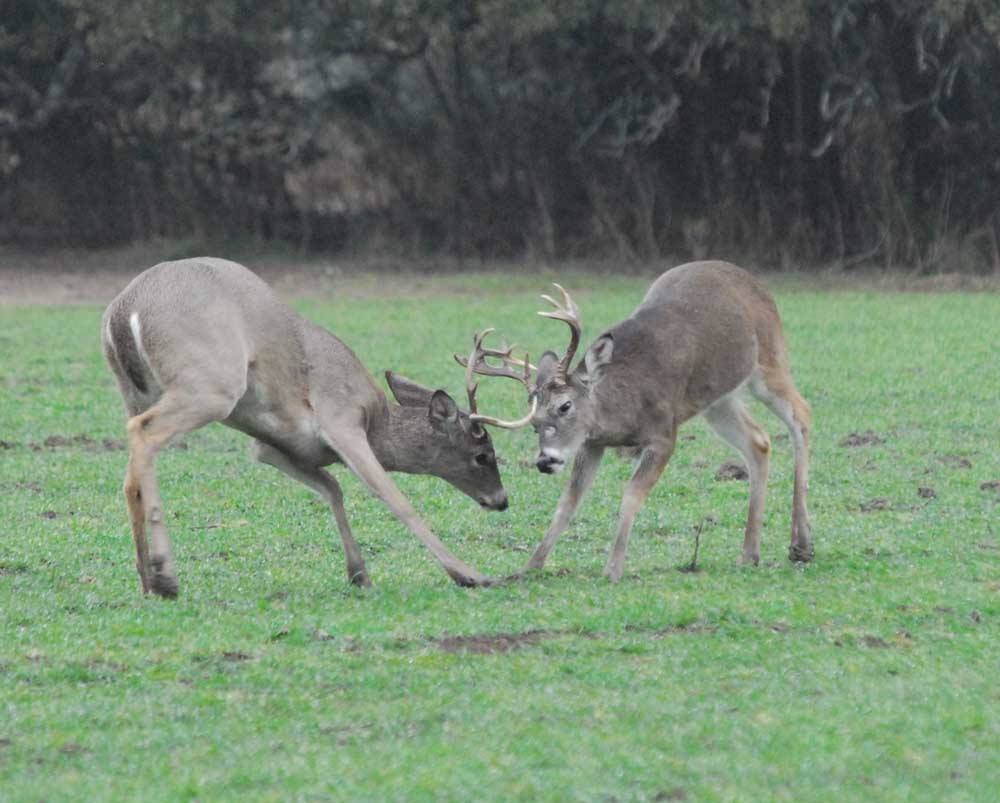Looking To The Past: Screwworm outbreak in Mexico renews concern in the U.S.
Published 9:25 pm Friday, February 7, 2025

- Once a major concern to wildlife and livestock in Texas, officials are again keeping an eye on an outbreak of New World Screwworm in southern Mexico. (Steve Knight/Tyler Morning Telegraph)
There are a lot of threats to Texas’ white-tailed deer population including Chronic Wasting Disease and the occasional outbreak of anthrax in the southwestern portion of the state. Before now it was the impact of screwworm back in the 1960s and to a lesser degree again in the 1970s.
The screwworm outbreak was something that happened before most of today’s hunters were even born. The problem is that while it was eradicated in Texas, it never disappeared in the western hemisphere and is again on the radar of wildlife and livestock officials.
“In November 2024, New World Screwworm was found in a cow at an inspection checkpoint in the Mexican state of Chiapas, which is Mexico’s southernmost state and borders Guatemala. NWS is endemic in South America and has spread throughout Central America over the last two years,” explained Blaise Korzekwa, Texas Parks and Wildlife Department white-tailed deer program leader.
Korzekwa explained this round of screwworm is a continuation of what was dealt with in the past.
“New World screwworms are larvae or maggots of the NWS fly that cause a painful condition known as NWS myiasis. NWS flies lay eggs in open wounds or orifices of live tissue such as nostrils, eyes, or mouth. These eggs hatch into dangerous parasitic larvae, and the maggots burrow or screw into flesh with sharp mouth hooks. Wounds can become larger, and an infestation can often cause serious, deadly damage or death to the infected animal. NWS primarily infests livestock, but can also affect humans and wildlife including deer and birds,” he said.
The eradication of screwworm in 1966 occurred with introduction of sterile male flies air dropped throughout infested areas in the U.S. Since females only mate once in their lifetime, and after mating with sterile males, they would lay nonviable eggs. Over time the population ceases to exist.
In the Southwest Eradication Area, which included Texas, Arkansas, Louisiana, New Mexico and Oklahoma, the eradication program began in 1962 and was declared a success four years later.
During the 1960s and before, the biggest impact on the state’s deer herd was in South Texas, but there were die-offs in other regions including the Hill Country.
“The deer population in South Texas was impacted the most, largely due to its proximity to large NWS populations in Mexico and warmer climate. Although the total deer population in Texas didn’t drop significantly during this time, areas such as South Texas would’ve been impacted the most and statewide population growth remained stagnant,” Korzekwa said.
During the 1950s the statewide deer population sat between 500,000 and a million, numbers higher than the late 1800s/early 1900s, but much lower than today’s estimate of 5 million-plus.
“By the 1970s, and after the eradication of NWS in 1966, the white-tailed deer population had quickly reached over 3 million deer,” Korzekwa said.
While screwworm was for the most part eliminated in the U.S., it continues in Central and South America, along with Cuba, Haiti and the Dominican Republic, leading to the occasional small outbreak here since the 1960s.
Because of the impact on cattle as well as wildlife, Korzekwa said the outbreak in southern Mexico has resulted in the USDA-APHIS announcing emergency funding to continue ongoing efforts to control the spread of NWS in Mexico and Central America. “This funding is not only used in the production of sterile flies, but also the dispersion of those flies across Mexico and Central America to create a biological buffer,” he added.
It is not clear if that funding could be part of the aid funding freeze recently announced in Washington.
Within Texas, Korzekwa said TPWD’s current role is surveillance and working with landowners to encourage reporting any signs of NWS.
Those signs include irritated or depressed behavior, loss of appetite, head shaking, smell of decaying flesh, maggots in wounds and isolation from animals and people.
Right now the closest outbreak is 800 miles south of Texas and there is no indication that NWS is in Texas or any other state in the U.S.
“The recent news of the detection in southern Mexico has brought back memories from landowners and hunters who were around during the eradication program of the 1960s. Since then, through animal surveillance measures, health inspections, and continued eradication efforts in Central America, Texans have not had to endure an infestation of NWS for several decades. As with any wildlife and livestock health issues, we highly encourage anyone who enjoys our natural resources to report any signs of NWS to the appropriate agency,” Korzekwa said.






